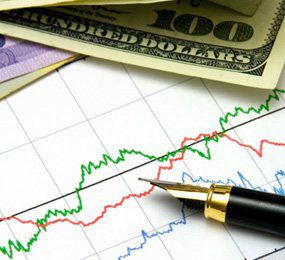Exponential Moving Average vs. Simple Moving Average: An Overview
Exponential Moving Average (EMA) and Simple Moving Average (SMA) each measure trends commonly used by technical traders to smooth out price fluctuations.
The primary difference between an EMA and an SMA is the sensitivity each one shows to changes in the data used in its calculation. The exponential moving average gives a higher weighting to recent prices, while the simple moving average assigns an equal weighting to all values.
Key Takeaways
- The exponential moving average gives a higher weighting to recent prices.
- The simple moving average assigns an equal weight to all values.
- As with all technical indicators, a trader cannot use one type of average to guarantee success.
Simple Moving Average
The Simple Moving Average (SMA) is the most common type of average used by technical analysts and is calculated by dividing the sum of a set of prices by the total number of prices found in the series. A 20-period moving average can be calculated by adding the following twenty prices together and dividing the result by twenty:
SMA = $311/20 = $15.55
| Day | Price |
| 1 | $10 |
| 2 | $12 |
| 3 | $10 |
| 4 | $14 |
| 5 | $16 |
| 6 | $16 |
| 7 | $15 |
| 8 | $17 |
| 9 | $17 |
| 10 | $16 |
| 11 | $18 |
| 12 | $15 |
| 13 | $14 |
| 14 | $16 |
| 15 | $15 |
| 16 | $18 |
| 17 | $18 |
| 18 | $19 |
| 19 | $17 |
| 20 | $18 |
Exponential Moving Average
Since the exponential moving average (EMA) places a higher weight on recent data than on older data, they are more reactive to the latest price changes than SMAs. The results from EMAs are more timely and usually the preferred average among traders. Traders calculate the multiplier for smoothing or weighting the EMA using:
The 20-day SMA was the sum of the closing prices for the past 20 trading days, divided by 20. For a 20-day EMA, the multiplier would be [2/(20+1)]= 0.0952, with the most commonly used smoothing factor as 2. To calculate the current EMA:
- EMA = Closing price x multiplier + EMA (previous day) x (1-multiplier)
The EMA gives a higher weight to recent prices, while the SMA assigns equal weight to all values. The weighting given to the most recent price is greater for a shorter-period EMA than for a longer-period EMA. For the 20-period example, 9.52% is the weight, but 18.18% would be the multiplier applied to the most recent price data for a 10-period EMA.
Charting Averages
Image by Sabrina Jiang © Investopedia 2020
Which Average Is Useful for Long Term Investments?
Traders with a longer-term perspective consider the average they use because the values can vary by a few dollars, which is enough price difference to ultimately prove influential on realized returns, especially when trading large quantities of stock.
What Is a Limitation of the Simple Moving Average?
Traders commonly agree that new data better reflects the current trend of a stock. The SMA may rely too heavily on outdated data since it gives the same weight to yesterday’s price as the price of one year ago.
What Is the Common Period Used for EMA Calculations?
The longer-day EMAs of 50 and 200 days tend to be used by long-term investors, while short-term investors tend to use 8- and 20-day EMAs.
The Bottom Line
Traders use many technical indicators to evaluate investment opportunities and trends. The simple moving average (SMA) is used to see price trends and assigns an equal weight to all values. The exponential moving average (EMA) gives a higher weighting to recent prices.



